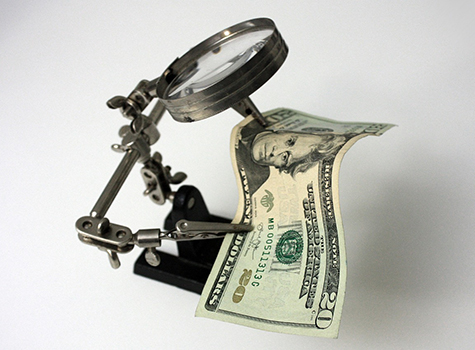By Ketu Desai

2025 is off to a rocky start. The question, as far as markets are concerned, is whether we’ll enter into a recession or not. Trade policy will go a long way in answering that question. In the meantime, we remain in an extreme chop zone between 4697 (200 week moving average) and 5746 (200 day moving average). The market will often shift multiple percentages in a day based on the latest headline or post from President Trump, yet most these are just noise.
There’s a meaningful split between hard and soft data; hard data indicates the economy is growing north of 2%, while the soft (survey-based data) indicates a meaningful contraction. Household debt to GDP is near historic lows, as is household debt to disposable personal income. Household net worth is near all-time highs. Real wages are growing. Unemployment claims remain at historically low levels. Corporations similarly remain in good shape, with low leverage, strong balance sheets and earnings growth.
Sentiment-based survey data, on the other hand, has reached recession levels. Consumer and business sentiment levels indicate a contraction of 4%. The market will break down or fall off this chop zone when we gain more clarity about whether the hard or soft data is correct.
There are many stocks, especially cyclicals, that are down over 30% with the historical median decline in a recession at 24%. Earnings season was a good reminder of how much negative news influenced certain stocks. United Airlines, for instance, gave two sets of guidance, one for a recession and one for not. Even at the low end the stock trades at a single digit multiple will keep the company profitable.
The market realized it had priced too much into stock, allowing it to rally. We have seen similar reactions for a number of stock post-earnings including, 3M, Texas Instruments, General Electric, Visa, JP Morgan, ServiceNow, UPS, Royal Caribbean, Ecolab, Honeywell, Caterpillar, Sherwin Williams, and Lam Research. Overall, 61% of companies have reported beating this by an average of 9.5%. Cyclical sectors have beaten it by an average of 15%, perhaps an indication of how much bad news has been priced in.
For long-term investors, the focus during this extreme chop period is figuring out what leadership will be doing. To start building your portfolio in these areas, as the gains will be significant coming out of it. Early candidates for leadership look to be financials, industrials, and Bitcoin. Financials globally are breaking out of a 15-year base. European financials have been one of the best performing areas this year, up 28%.
Domestic financials have simply fallen and filled last year’s rally. Financials have many tailwinds with a steeper yield curve to drive net interest margins. A new deregulatory focus combined with a weaker Basel III endgame will lower capital requirements and improve returns on equity. De-regulation will make financials one of the best sectors in returning capital back to shareholders. Wells Fargo just announced a $40bn buyback, nearly 20% of its market cap. Visa announced a $30bn buyback. Capital markets and M&A have been shut for nearly four years now, and these openings will provide a further earnings boost. AI and technology are driving margin expansion in financials, up nearly a percentage over the past year. Financials trading at just 16x, are in the process of multiple re-rating.
Many of the major secular themes benefit industrials, ranging from increased global defense spending, AI and infrastructure buildout, increased focus on domestic manufacturing, onshoring / regional supply chains, and a new aerospace cycle. These themes could last over a decade with large industrial companies such as GE Aerospace, RTX, Eaton, Lockheed Martin, GE Vernova, Boeing, Honeywell, Northrop Grumman, Emerson Electric, Rockwell Automation, and Vertiv poised to benefit. Industrials outperform when PMIs bottom and turn up. In particular, when PMIs are less than 47, the 12M forward return has historically been 22%, with a 95%-win ratio.
We also appear to have reached an inflection point with Bitcoin. For most of Bitcoin’s history, it’s essentially traded like a levered version of the Nasdaq 100. Initially it was a risk-on asset class, but in 2025 that changed. Its correlation with the Nasdaq 100 has broken down with trades as a digital store of value in recent weeks. If that remains the case, the Bitcoin rally has barely begun. The reasons for allocation to crypto are increasing as it is not subject to tariffs, can potentially be an inflation, central bank and fiscal spending hedge, and we are in the early stages of sovereign and institutional involvement.
The geopolitical turmoil and concerns about the US Dollar as the reserve currency will make the global digital store of value more important. Financial markets such as Germany and Hong Kong, for example, are discussing holding Bitcoin in their reserves. Pension funds make up only 1% of reported holdings, even if a small increase will cause a meaningful bump in price. Just in the past few days, the Fed announced de-regulatory measures for banking crypto assets. The current administration is crypto-friendly, as new policies start to get rolled out, institutional involvement increases, and correlations further break down.
Looking forward, the market will focus on the latest from Washington, geopolitics, earnings, a Fed meeting, and economic data.
Ketu Desai is the Principal of i-squared Wealth Management Inc. (www.isquaredwealth.com), an investment management firm based in New Jersey. [email protected]



